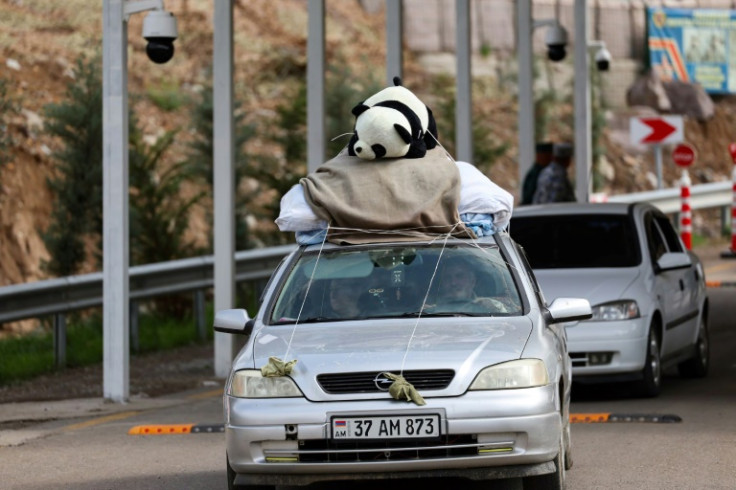Silence Falls On Karabakh After Refugee Exodus

Silence has returned to the mountain road down which most of the population of Nagorno-Karabakh fled after the self-proclaimed republic surrendered to Azerbaijani troops.
After nine days of fear and panic, the exodus of Armenians is over with the Lachin Corridor that links Karabakh to Armenia all but deserted except for a rare car, said AFP reporters there on a visit organised by Azerbaijani authorities.
On a hill, the Armenian flag flew next to a group of civilian volunteers waiting for the last refugees to arrive.
In the middle of a bridge between them and an Azerbaijani checkpoint, sat an armoured car belonging to Russian peacekeepers deployed there as part of a peace deal after the 2020 war that Armenia lost.
A clapped-out old Russian 4X4 puffed up to the Azerbaijani customs, with a mattress, furniture and a bike strapped to its roof.
Its driver, Sergei Astsarian, showed his ID to the Azerbaijanis, who are equipped with the latest digital technology.
The 40-year-old shopkeeper said he finally decided to leave his home in the rebel capital of Stepanakert, which gave up its 30-year separatist struggle after a lightning offensive by Azerbaijani troops.
In the past few days, Astsarian said he had been living in the city "alone, like the last of the Mohicans" and was concerned that he might get stuck there forever.
Despite appeals by Azerbaijan for ethnic Armenians to stay in Karabakh, Astsarian said he left because there had been no "concrete guarantees", just "verbal" ones.
"I spoke to the police and they said: 'You can stay'. I said: 'To do what?'"
"But if we want to come back, they said: 'No problem, you can live in your homes. And for those of you who have been living in Azeri homes, there will be new ones built.'".
Tens of thousands of ethnic Azeris fled Karabakh during a war in the 1990s and many now dream of returning.
Astsarian said he hoped to join relatives living in Europe.
After a quick inspection, the car crept forward to go under a huge X-ray scanner, before Astsarian drove on towards the Armenian flag, without looking back.
But further up the road taken by the more than 100,000 refugees who have fled to Armenia in just over a week there were eerie remains of the exodus.
Strewn on the side of the road were everything from a pink pram to an elegant hat, to a bathtub and a burnt-out Lada -- objects abandoned by ethnic Armenians from Karabakh on their flight.
There were several Russian checkpoints on the road that winds through the valley and no Azerbaijani soldiers could be seen -- only Azerbaijan's internal security forces.
In Lissagorsk, a yellow minibus laden with luggage could be seen stopped under a Russian flag at one of the checkpoints.
On board were around 15 elderly men looking out at a foggy road through dirty windows.
They declined to say where they were from.
There has been very little information filtering through from the rebel capital Stepanakert, known as Khankendi in Azeri, whose population of 55,000 has mostly left after the separatists' surrender last month.
The city is still inaccessible to the media for "security reasons".
For the first time in 30 years, a UN mission visited the enclave on Sunday to assess the humanitarian needs there.
White trucks belonging to the International Committee of the Red Cross, among the few humanitarian agencies able to access the enclave, could be seen on the Lachin road.
The Red Cross is engaged in "life-saving activities" such as transporting the wounded and bringing medical supplies, the organisation's operations manager Carlos Morazzani said in Geneva on Friday.
He said they were also working on transporting the corpses of civilians and soldiers killed in the fighting last month following a "large influx of bodies".



© Copyright AFP 2024. All rights reserved.





















